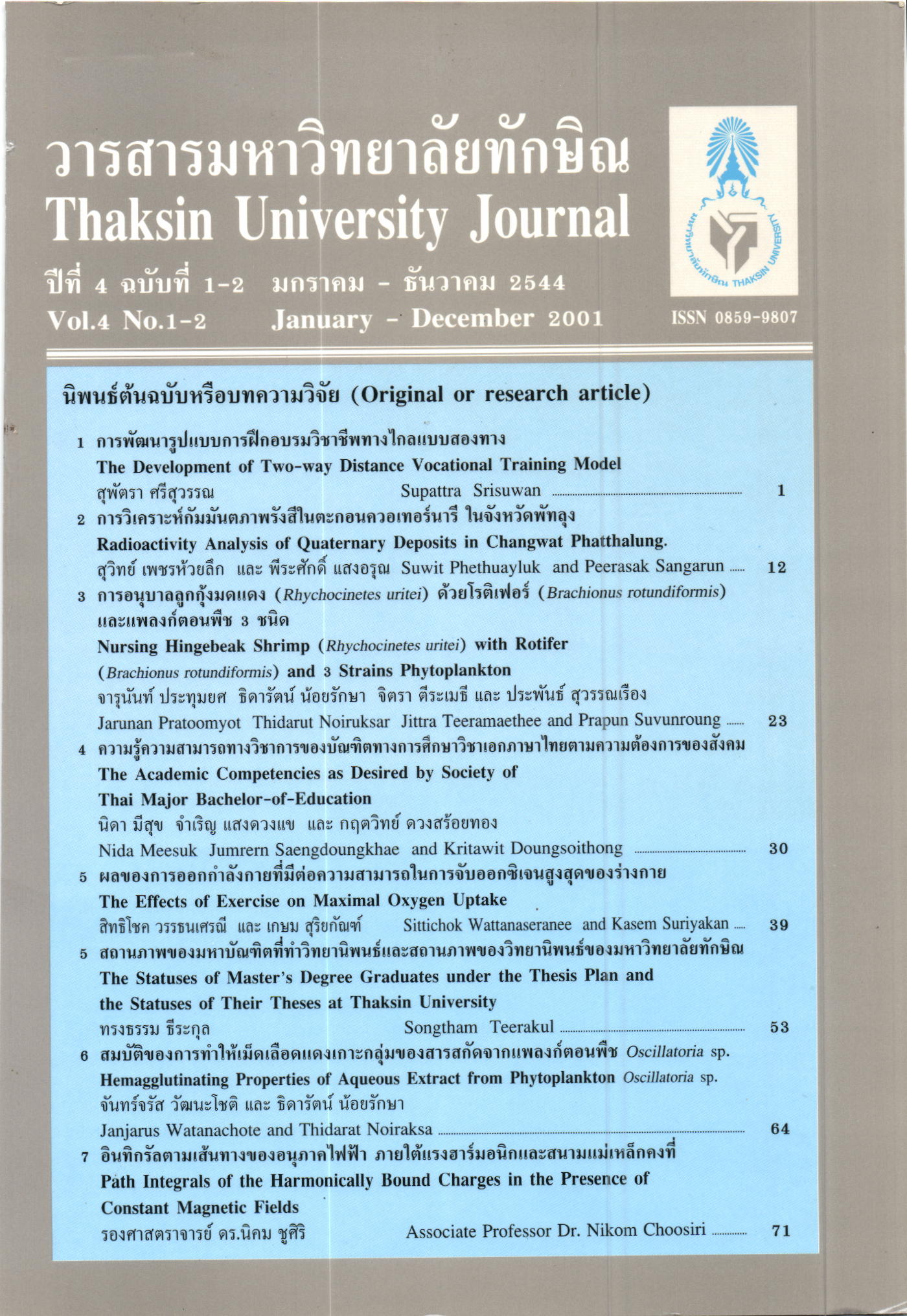การพัฒนารูปแบบการฝึกอบรมวิชาชีพทางไกลแบบสองทาง
Main Article Content
Abstract
The purposes of this study were to develop the two-way distance training model and to evaluate the model's efficiency through the experts consultation and trainees' satisfaction and achievement.
Two groups of sample were selected. Five training and educational technology experts and 40 trainees from two Kasetsart University's campuses 20 from Bangkhen and another 20 from Kampangsaen were purposively selected.
The four resea.rch tools included the model evaluation form, the achievement test, the hands-on evaluation checklist, and the evaluation checklist. The data were zmalyzed through mean score! percentage, standard deviation, the paired samples t-test, imd the independent -samples t-test. Findings of the study were as following.
1. The training and educational technology experts found the model effective. The s steps include in the training guide were (1) the training planning (z) the training activities, and (r) the training evaluation. The training planning included the training need assessment, the content design, and the teleconference system delivery. The training activities included the hand-on experience, the use of training media, the presentation of training content, the use of motivation techniques, the use of pre- and posttests, and the use of video teleconference. The pre the in-between, and the post-assessment were conducted.
2. The trainees from Bangkhen campus gained higher achievement scores than those of the Kampangsaen campus.
The pre-and the post-test scores of the two groups were not significantly different at 0.05 level. Eighty percent of the trainees at both campuses gained higher practical skill test after their training g.
3.The trainees of both campuses were highly satisfied with the two-way training model.
Two groups of sample were selected. Five training and educational technology experts and 40 trainees from two Kasetsart University's campuses 20 from Bangkhen and another 20 from Kampangsaen were purposively selected.
The four resea.rch tools included the model evaluation form, the achievement test, the hands-on evaluation checklist, and the evaluation checklist. The data were zmalyzed through mean score! percentage, standard deviation, the paired samples t-test, imd the independent -samples t-test. Findings of the study were as following.
1. The training and educational technology experts found the model effective. The s steps include in the training guide were (1) the training planning (z) the training activities, and (r) the training evaluation. The training planning included the training need assessment, the content design, and the teleconference system delivery. The training activities included the hand-on experience, the use of training media, the presentation of training content, the use of motivation techniques, the use of pre- and posttests, and the use of video teleconference. The pre the in-between, and the post-assessment were conducted.
2. The trainees from Bangkhen campus gained higher achievement scores than those of the Kampangsaen campus.
The pre-and the post-test scores of the two groups were not significantly different at 0.05 level. Eighty percent of the trainees at both campuses gained higher practical skill test after their training g.
3.The trainees of both campuses were highly satisfied with the two-way training model.
Article Details
Section
Research Articles


